Improve the Lives of your Workforce
Structure. Relieve. Streamline. FourVision improves the lives of your workforce as the implementation partner of Microsoft Dynamics 365 Human Resources. We support your HR processes; recruitment, hiring, employee management and employee development, with smart tools and standardized processes. Freeing up time for you to focus on what really matters; building a better future for your company.

 Get in touch
Shift from Administration to Strategy with Dynamics 365 Human Resources
Get in touch
Shift from Administration to Strategy with Dynamics 365 Human Resources
Create your end-to-end solution with Dynamics 365 HR and our Web Apps

HR Request
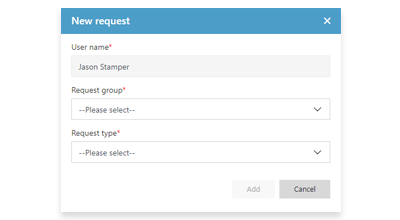
Any initiated request is routed via automated workflows to get to the appropriate and necessary people for review and further action. The Web App links employee and organizational data through the secure Dynamics 365 platform.

Boarding
![]()
Our Boarding Web App allows you to create templates that outline tasks for any employee, specified to their position within your organization. This part of the Boarding Web App helps your employees complete tasks necessary to for each of the three Boarding processes.

Document Management
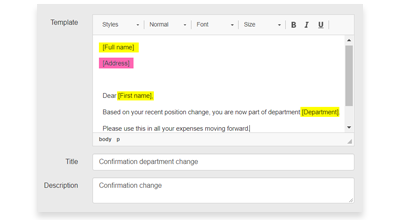
During the Employee Management lifecycle, it is important to keep all documents on a regular basis (e.g. passport renewals, etc.). This can be tricky to keep track of, so we have added the option to add reminders to notify you whenever a document is about to expire.

Timesheets & Expenses
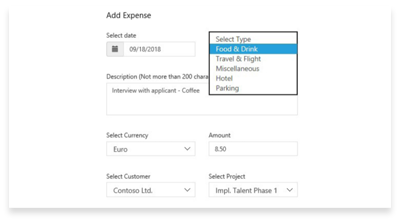
The Timesheets & Expenses app allows for easy timesheets registration, whether it is project-based or non-billable hours. with easy expense management for employees in the field.

Succession Planning
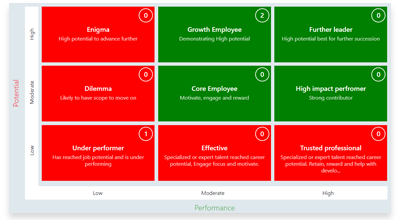
Organization charts allow you to oversee the organization’s hierarchy at a glance presenting an overview of important succession information, i.e. tenure risk, succession gaps, etc. Giving managing teams accurate information based on employee statistics facilitating informed decision-making.

Performance Management

Configure workflow requirements tailored to specific positions within the organization, linked to objectives for individual employees. Base templates on internal performance and review policies and couple it to succession overviews.

Payroll Interface
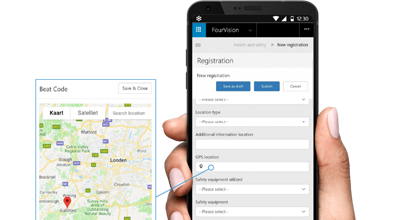
All personnel data stored in the HR system can be accessed through the secure cloud-based data streaming. The interface makes the translation between the required employee details and expedites it to Payroll translated to the correct format.

Full Integration with the Microsoft Dynamics 365 Platform
Imagine one cloud environment that securely stores all of your employees’ data. Now consider what that would mean for your company. Any request can be submitted to, and received by, the right department and be processed in an instant. Your HRM team’s time is freed up thanks to full integration in Microsoft Dynamics 365 and Dataverse. We can implement your new solution seamlessly without interrupting your daily business process.
News
Release Highlights – Spring 2024
Spring is in the air, and we are bringing more than just warmer weather. We are thrilled to share the details of our latest enhancements and features in the Spring 2024 release for FourVision’s HR suite for Microsoft Dynamics 365.
Let’s dive into what the Spring 2024 product update has in store for you.
Release highlights – Winter 2023-2024
We are pleased to present the highlights of the first release update of 2024. This update brings a host of improvements and new features aimed at streamlining our HR solutions for Microsoft Dynamics 365.
Let us delve into the highlights of the FourVision winter release of this 2023-2024.
Be inspired by our clients

Simplifying SoftwareOne’s Salary Increase Process with Annual Increment
Manually appointing Annual Increment to employees is a time-consuming process. SoftwareOne, a software company operating in many different sectors was looking for a way to optimize this annually recurring task. Due to the sensitive nature of the information,
Read more
Transforming to digital HR from the ground up at Sanford
With over 150 years of history, Sanford Limited is New Zealand’s largest seafood company. What started as a traditional family fishery in 1864 has grown to become an international seafood supplier,
Read more
Klimaoprema chooses FourVision to streamline HR operations with Microsoft Dynamics 365 F&O
Klimaoprema is a leading Croatian manufacturer of cleanroom systems and heating, ventilation, and air conditioning (HVAC) equipment. Founded in 1975, the company has since grown from a small manufacturing facility with 12 employees to an industry leader which today employs a workforce of 700 and operates from 43,000 m2 of manufacturing,
Read more




